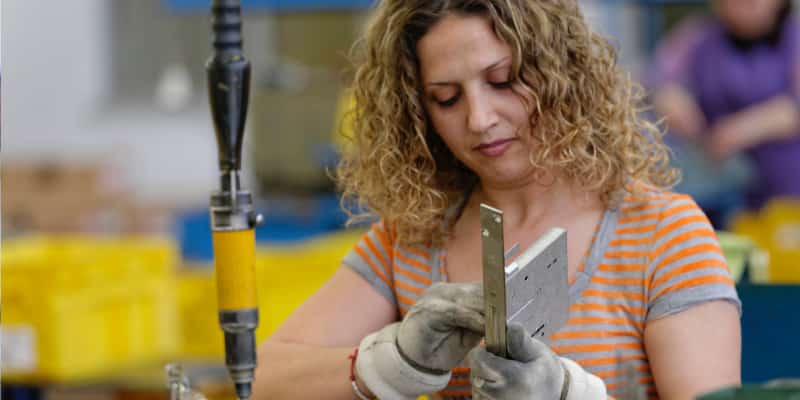Report on Gender Inequity and its Impact on Food Security in Coastal Communities
Executive Summary
Global discussions on food systems, such as the recent Food Systems Summit, frequently overlook the critical role of gender equity, thereby impeding progress towards Sustainable Development Goal 2 (SDG 2: Zero Hunger). This report examines the systemic gender-based disparities in the small-scale fishing communities of Kenya and Madagascar, highlighting how these inequities directly undermine food security and nutritional outcomes. Achieving truly equitable food systems necessitates a gender-transformative approach that aligns with SDG 5 (Gender Equality), SDG 14 (Life Below Water), and other related development goals.
Gender Disparities and Food Insecurity: A Direct Challenge to SDG 2 and SDG 5
The link between gender inequality and malnutrition is starkly evident in coastal communities that depend on small-scale fisheries for sustenance and income. While women are integral to these food systems, they disproportionately suffer from hunger and poor health, a critical failure in the pursuit of SDG 2 and SDG 3 (Good Health and Well-being).
Case Study: Madagascar
Madagascar’s food security crisis illustrates a profound challenge to the Sustainable Development Goals. The nation’s progress is hindered by:
- Over 60% of the population experiencing food insecurity.
- High global rates of malnutrition, with 30% of coastal nutrient supply dependent on small-scale fisheries (SDG 14).
- Severe gender disparities, with 38% of women of reproductive age suffering from anaemia, directly impacting SDG 3 and SDG 5.
- A higher prevalence of underweight women compared to men, indicating inequitable food access at the household level.
Case Study: Kenya
Kenya’s coastal regions face similar challenges, where women’s contributions to food security are not matched by their nutritional outcomes.
- Dietary diversity among women is critically low, with only 14% consuming foods from at least five of ten recommended food groups, a direct contradiction to the aims of SDG 2.
- Women fishers contribute up to half of the fish consumed in some households, yet their own nutritional needs are unmet, highlighting a systemic failure to achieve SDG 5 and SDG 10 (Reduced Inequalities).
In both nations, food insecurity is a function of inequity in access, decision-making, and distribution, where men are systemically prioritized over women.
Systemic Barriers to Sustainable Development
The failure to achieve food and nutrition security is rooted in deep-seated structural barriers that prevent the realization of multiple SDGs, including SDG 1 (No Poverty), SDG 8 (Decent Work and Economic Growth), and SDG 10.
Socio-Cultural Norms and Economic Exclusion
Invisible yet powerful barriers hinder women’s full participation and empowerment:
- Limited Opportunities: Women have fewer opportunities to fish and less access to equipment, resulting in smaller, less diverse catches and lower incomes, which perpetuates poverty cycles (SDG 1).
- Restrictive Social Roles: Deep-rooted norms confine women to roles as caregivers and processors, excluding them from decision-making and higher-value economic activities, which contravenes the principles of SDG 5 and SDG 8.
- Informal Labour: Men dominate higher-paying roles, while women are often relegated to informal, lower-value positions such as cleaning fish, reinforcing economic inequality.
A Gender-Transformative Framework for Progress on the SDGs
To address these challenges, a paradigm shift is required from focusing solely on food production to implementing gender-transformative approaches that dismantle structural barriers. This strategy is essential for making meaningful progress on the 2030 Agenda for Sustainable Development.
Policy and Programmatic Recommendations
Achieving equitable food systems requires a multi-faceted approach that integrates gender equality into all aspects of policy and practice.
- Centre Women in Fisheries Policy: Recognize the crucial role of women in small-scale fisheries (SDG 14) and place their empowerment at the core of food security strategies (SDG 2).
- Dismantle Structural Barriers: Move beyond simple inclusion to actively provide women with agency and access to gear, training, financial services, and markets, fostering economic empowerment (SDG 8).
- Promote Equitable Household Decision-Making: Engage men as allies in challenging restrictive gender norms and promoting joint decision-making on food and income, a key driver for achieving SDG 5.
- Integrate Gender into Policy and Finance: Embed gender equity into all layers of food systems policy, from fisheries management to financing women-led initiatives, ensuring that success is measured not by production volume but by equitable access and nutritional outcomes for women and girls (SDG 5, SDG 10).
Conclusion: Achieving the SDGs Through Gender-Equal Food Systems
Ultimately, achieving SDG 2 (Zero Hunger) is inseparable from achieving SDG 5 (Gender Equality). Food security is not merely about producing more food; it is about ensuring that every person, regardless of gender, has the ability to access the nutrition required for a healthy and productive life. Global policy platforms must commit to concrete plans that support coastal communities by addressing the gendered nature of food insecurity. Failure to confront these inequities will result in a failure to build the truly sustainable and just food systems envisioned by the Sustainable Development Goals.
1. SDGs Addressed in the Article
- SDG 2: Zero Hunger – The article’s central theme is food insecurity and malnutrition, particularly in the coastal communities of Kenya and Madagascar.
- SDG 5: Gender Equality – The article extensively discusses how gender inequity is a root cause of food insecurity, highlighting the disadvantages women face in access to resources, decision-making, and nutrition.
- SDG 14: Life Below Water – The context of the article is small-scale fisheries and the dependency of coastal communities on marine resources for food and income.
2. Specific Targets Identified
SDG 2: Zero Hunger
- Target 2.1: By 2030, end hunger and ensure access by all people, in particular the poor and people in vulnerable situations, including infants, to safe, nutritious and sufficient food all year round.
- The article highlights that in Madagascar, “over 60% of the population experiences food insecurity” and discusses how women “eat the least” and “go hungry.”
- Target 2.2: By 2030, end all forms of malnutrition, including achieving, by 2025, the internationally agreed targets on stunting and wasting in children under 5 years of age, and address the nutritional needs of adolescent girls, pregnant and lactating women and older persons.
- The article points out that in Madagascar, “38% of women of reproductive age are anaemic” and that more women than men are underweight. It also notes the poor dietary diversity among women in Kenya’s coastal counties.
SDG 5: Gender Equality
- Target 5.5: Ensure women’s full and effective participation and equal opportunities for leadership at all levels of decision-making in political, economic and public life.
- The article states that women are excluded from decision-making roles, which are dominated by men. It calls for women to be given “a heightened, more equitable role in fisheries management” and “the necessary authority to make decisions about food and income at household level.”
- Target 5.a: Undertake reforms to give women equal rights to economic resources, as well as access to ownership and control over land and other forms of property, financial services, inheritance and natural resources, in accordance with national laws.
- The article describes how women have “less access to equipment” and markets. It advocates for ensuring women “have agency and access to gear, training, nutrition knowledge and markets.”
SDG 14: Life Below Water
- Target 14.b: Provide access for small-scale artisanal fishers to marine resources and markets.
- The article focuses on small-scale fisheries and the barriers women face in this sector, including less access to equipment and markets, resulting in smaller catches and lower incomes. It emphasizes the need to center these communities in global food discussions.
3. Indicators Mentioned or Implied
Indicators for SDG 2 Targets
- Prevalence of food insecurity: The article states that in Madagascar, “over 60% of the population experiences food insecurity.”
- Prevalence of malnutrition (underweight): It is mentioned that in Madagascar, “more women than men are underweight.”
- Prevalence of anaemia: The article specifies that in Madagascar, “38% of women of reproductive age are anaemic.”
- Dietary diversity: A specific indicator is provided for Kenya’s coastal counties, where “as low as 14% of them [women] having consumed foods from at least 5 out of 10 defined food groups.”
Indicators for SDG 5 Targets
- Access to economic resources/equipment: The article implies this can be measured by stating women have “less access to equipment” and “their catches are smaller and less diverse.”
- Income disparity: It is noted that women’s “incomes are lower,” suggesting income levels by gender as an indicator.
- Participation in decision-making: The article implies this can be measured by observing that men “dominate higher-paying, decision-making roles” while women are relegated to “informal, lower-value positions.”
Indicators for SDG 14 Targets
- Dependence on small-scale fisheries: The article indicates the importance of this sector by stating that in Madagascar, “30% of the nutrient supply for its coastal populations dependent on small-scale fisheries.”
- Contribution to household consumption: An indicator of the role of women fishers is that their catch “account for up to half of the fish consumed in some households” in Kenya.
4. Summary Table of SDGs, Targets, and Indicators
| SDGs | Targets | Indicators |
|---|---|---|
| SDG 2: Zero Hunger |
2.1: End hunger and ensure access to safe, nutritious and sufficient food.
2.2: End all forms of malnutrition. |
|
| SDG 5: Gender Equality |
5.5: Ensure women’s full participation and equal opportunities for leadership.
5.a: Give women equal rights to economic resources. |
|
| SDG 14: Life Below Water | 14.b: Provide access for small-scale artisanal fishers to marine resources and markets. |
|
Source: dialogue.earth







